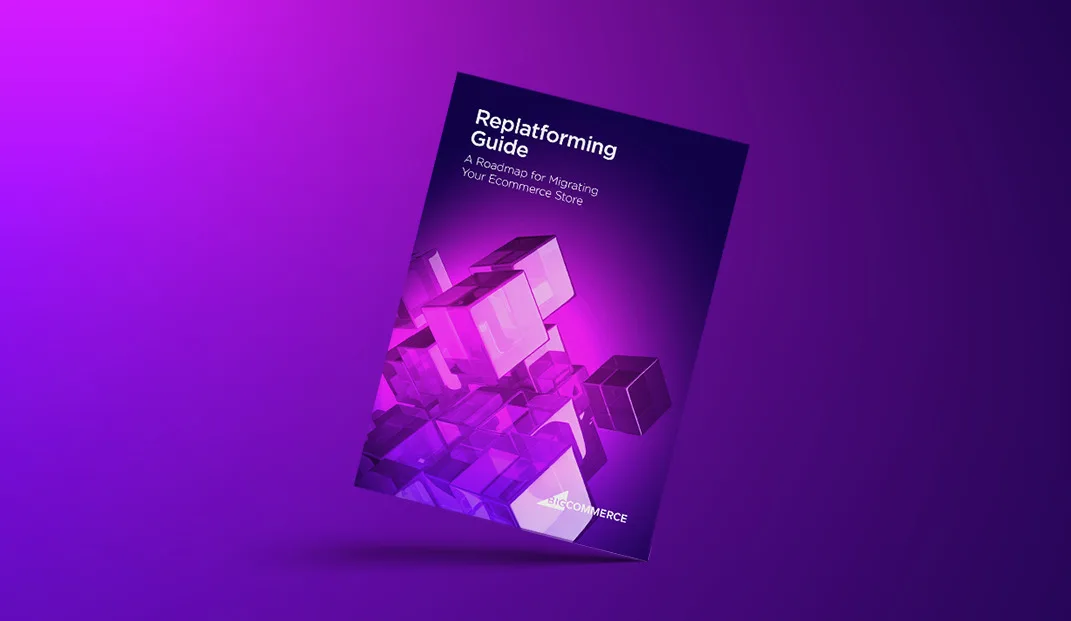
Replatforming Guide: A Roadmap for Migrating Your Ecommerce Store
Make your ecommerce replatforming project a success with our step-by-step guide filled with best practices from enterprise migration experts.

Top Adobe Commerce Alternatives to Consider for Your Online Business


Top Adobe Commerce Alternatives to Consider for Your Online Business
Get The Print Version
Tired of scrolling? Download a PDF version for easier offline reading and sharing with coworkers.
A link to download the PDF will arrive in your inbox shortly.
Adobe Commerce (formerly Magento) is a longstanding giant in the ecommerce space. Brands such as Dick’s Sporting Goods, Cisco and HUGO BOSS use the platform to create their ecommerce experience. With a wide range of customization options, Adobe Commerce provides a powerful foundation for companies looking to make a one-of-a-kind experience for their customers.
That said, their platform might not be the right fit for every business. The total cost of ownership can be steep when you take into account hosting, security, maintenance and design or development costs.
While the platform allows for extreme customization, it also can be complicated and difficult to update quickly in order to innovate and stay competitive. This can make it difficult for merchants who are looking to make changes and scale quickly.
Whether you’re set on Adobe Commerce and doing some last-minute comparison shopping, or early in the process of choosing your next platform and want to learn what else is out there, this deep dive is for you. You’ll learn about some of the alternatives to Adobe Commerce you might want to consider.
Adobe Commerce Platform Options
Adobe Commerce is an ecommerce platform built on open-source technology. This means that those who download the Adobe Commerce software can make changes to the source code to customize their ecommerce site.
Adobe Commerce is best suited for ecommerce merchants with teams of developers to make necessary changes and updates. While many users may initially be attracted to Adobe Commerce open-source framework, it’s best suited for businesses with teams of developers as much of a their resources will likely be spent on updates, security patches, maintenance and security which can have an impact on their budgets.
When we talk about Adobe Commerce, it’s important to consider the different options for the software. While it is often thought of as an on-premise solution, they do also have a cloud-hosted option.
Magento Open Source (Formerly Community Edition).
This is a free product anyone can download from the Adobe Commerce website. After installing Magento, the user is responsible for hosting, support and ecommerce development costs.
Adobe Commerce.
This on-premise premium option comes with added features and support. It is usually only adopted by enterprises because the monthly costs can be steep.
Adobe Commerce Cloud.
A cloud-hosted version provides the same features as the on-premise Adobe Commerce but eliminates the need for self-hosting. It’s important to distinguish that even though this edition is cloud-hosted, it is not the same as SaaS (Software-as-a-Service). More on the differences below.
Potential Factors to Seek an Adobe Commerce Alternative
Whether you’re already on Adobe Commerce and feeling like there might be a better fit out there, or if you’re still just considering it as part of your research, there are several reasons you may want to keep your options open.
Adobe Commerce can be costly.
Adobe Commerce is usually synonymous with big budgets. Of course, how much your license will cost you depends on the product you choose. Magento Open Source is free to download from the Adobe Commerce website, but that doesn’t factor into your total cost of ownership
You’ll be paying for all the design and development fees to get your site up and running, along with continuous costs to cover all hosting, ecommerce security, development and design fees.
While prices may vary, experts have found that the cost of Adobe Commerce could range from $22,000 to $125,000, depending on the size and complexity of your business. Many businesses don’t have this kind of money to spend every year on Adobe Commerce and instead need to focus resources on other critical areas of their operations.
Adobe Commerce may require a lot of development time.
One of Adobe Commerce’s biggest selling points is its openness for extreme customization. But to make complex changes while keeping your integrations working properly and data flowing smoothly, you may need a team of developers at work who fully understand its complex infrastructure.
Keeping up with security patches and version updates is necessary in order to have the latest and most secure version of Adobe Commerce, which can be labor-intensive and time-consuming. So it may be necessary to have trained developers for getting you’re site up and running, but also as you continue monitoring and updating your site.
Adobe Commerce can be challenging to maintain.
Adobe Commerce is highly customizable, allowing merchants to carefully fine-tune every step in the buyer journey. However, you undertake certain responsibilities in order to keep our site safe under Adobe’s shared responsibility model.
Adobe Commerce is good about creating patches for security vulnerabilities, but keeping up with the security patches and updates can be time-consuming and labor-intensive, most merchants are running one or more versions behind the latest release leaving them open to unnecessary risk.
So while the Adobe Commerce security center, in partnership with Sansec, offers a free scan so users can monitor for security risks, patches and unauthorized access to your site, the responsibility of applying those patches and fixes to individual stores, still falls on the merchant.
Further, Adobe Commerce users sometimes lack technical support and instead have to depend on community forums, their agency partner or in-house IT teams. With no business consulting, project management or proactive engagement, Adobe merchants can be left feeling uninformed and unsupported by customer success.
You’re choosing to migrate.
Adobe Commerce stopped supporting Magento 1 in June 2020, meaning stores built on Magento 1 are no longer receiving support or being provided with security patches for their platform. Because of this, users still on Magento 1 are at risk of falling out of PCI compliance, losing their payment provider and no longer having the extensions or developer resources they need.
Adobe encouraged merchants that were still using Magento 1 to move to Magento 2. However, because of the differences between the two platforms, it required substantial development work to migrate.
This cycle, which shows no signs of slowing down, is normal with open-source software, but that means even for those merchants who moved from M1 to M2 and who keep up with staying on the most up-to-date versions, will one day most likely need to re-platform again if Adobe ever releases an M3 version of their software and sunsets the current M2 version.
If you would like to avoid the headache of migrating between versions, a SaaS platform might be for you
You’re just unhappy with the platform.
Maybe you’re sick of having to deal with hosting because it doesn’t come as part of your Adobe Commerce services, or you’re finding that Adobe Commerce support isn’t able to help you in a timely fashion.
Maybe your customers are experiencing issues on your site that you think another solution could fix. You’re here because, in some way or another, you just aren’t happy with Adobe Commerce’s services. Let’s consider some alternatives.
Best Features to Consider with a New Platform
If any of the above challenges apply to you, and you’re ready to leave Adobe Commerce in the dust, where should you take your business next? Here are a few criteria you may want to consider in your new platform.
Depending on the nature of your business structure, your marketing strategy and your customer base, what’s most important for your business might differ from everyone else’s. You’re not looking for the best ecommerce platform in the world; you’re looking for the best fit for you.
Website builder.
If you are used to working with Adobe Commerce, you are used to being able to customize your site as you want, but also having to rely on a team of developers to actualize it.
Choosing a platform with a more user-friendly website builder can potentially provide more control over your website. The trade off is you may have less customization potential.
Available themes and templates.
Many ecommerce platforms come with customizable templates that you can work with to build your site.
Easier integrations.
Many ecommerce platforms have options for fast, free plugins that can be installed on your site within a few minutes. You can save time and development costs if you make sure your chosen platform is already able to easily integrate with your mission-critical systems, such as your order management and inventory management systems.
Better payment gateways.
Payment gateways can sometimes be a pain, but many sites offer pre-installed payment processing from the likes of Stripe, PayPal, Venmo, Amazon Pay, Adyen and more. Make sure your chosen payment gateways are covered and that you won’t be charged transaction fees.
Top Ecommerce Platform Alternatives to Adobe Commerce
Here are a few open-source and SaaS alternatives that could provide you some or all of the features that your business is looking for.
BigCommerce.
Offering beautiful site templates and reliable uptime, BigCommerce is an Open-SaaS platform that can provide business owners with an ecommerce solution through monthly fees.
BigCommerce’s open API combines all of the benefits of a SaaS platform — such as being hosted on behalf of businesses, having a lower total cost of ownership and going to market faster — with the flexibility to create custom integrations and functionality faster.
Benefits
Robust out-of-the-box features.
99.98% uptime.
24/7 customer support.
PCI compliance.
Exposed APIs allow for vast customization.
Learn how Saddleback Leather Company sells and innovates since they moved to BigCommerce. Watch the their story here.
WooCommerce.
WooCommerce is the primary plugin used to power online stores on WordPress and often the go-to option in the WordPress community.
Benefits
The WooCommerce plugin itself is completely free to use with any WordPress site.
Large number of plugins available to extend native features.
Part of an extensive WordPress community.
Shopify.
Shopify is a SaaS option that is well-known for powering a wide variety of ecommerce stores. They have a large merchant count and make it easy to get a site up and running quickly.
Benefits
Easy to use.
Various mobile-friendly themes.
Robust app store for getting additional ecommerce features.
Salesforce Commerce Cloud.
Salesforce Commerce Cloud, previously known as Demandware before its 2016 acquisition by Salesforce, is another SaaS ecommerce solution.
Benefits
Hosting and maintenance are taken care of by Salesforce.
Versatile omnichannel features.
The Final Word
There are a lot of choices out there for ecommerce platforms, and a lot of factors to consider when picking the one that’s best for your business. If you’re currently on Adobe Commerce and it’s not meeting your needs, it could be beneficial to see what other platforms are available and how it can serve your business better.
Remember: Adobe Commerce isn’t your only option.
BigCommerce might not be the right choice for you, but the important thing is to consider what your business needs and find the right solution to meet those needs. Check out why Adobe Commerce merchants are moving to BigCommerce and see what BigCommerce can do to help grow your business.

Reed Hartman is a Content Marketing Manager at BigCommerce, where he uses his years of research, writing and marketing experience to help inform and educate business owners on all things ecommerce.


